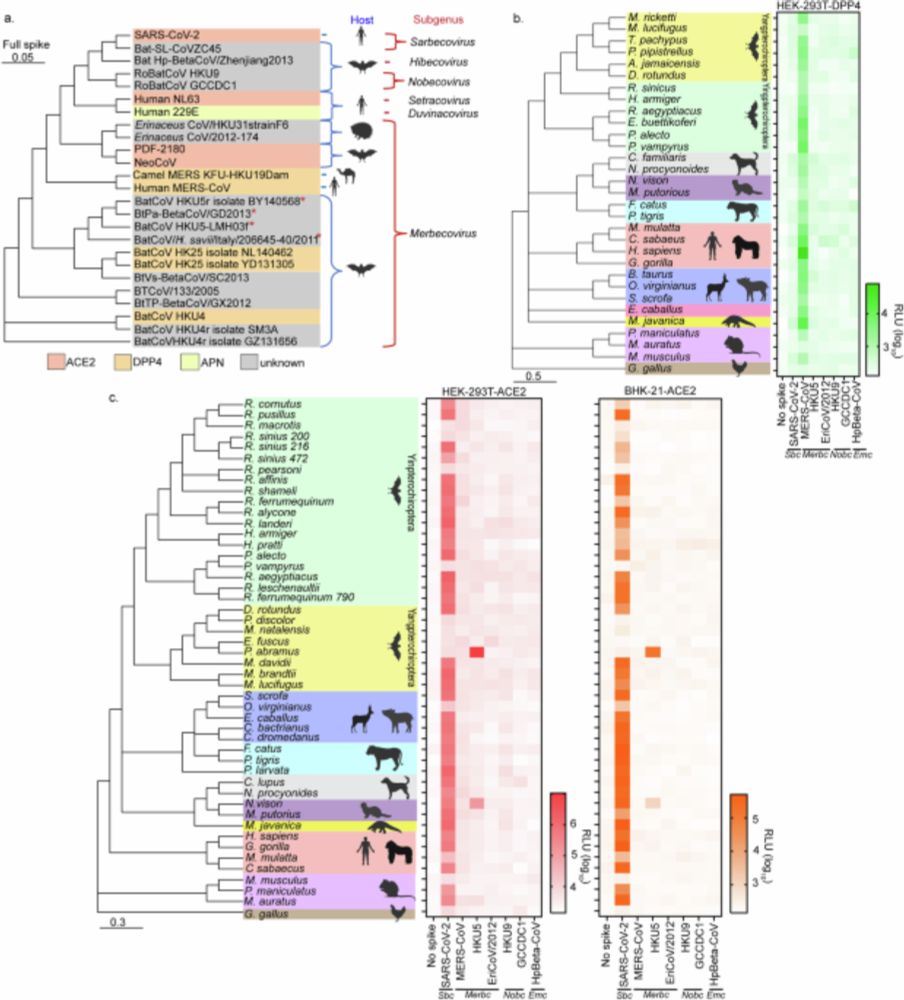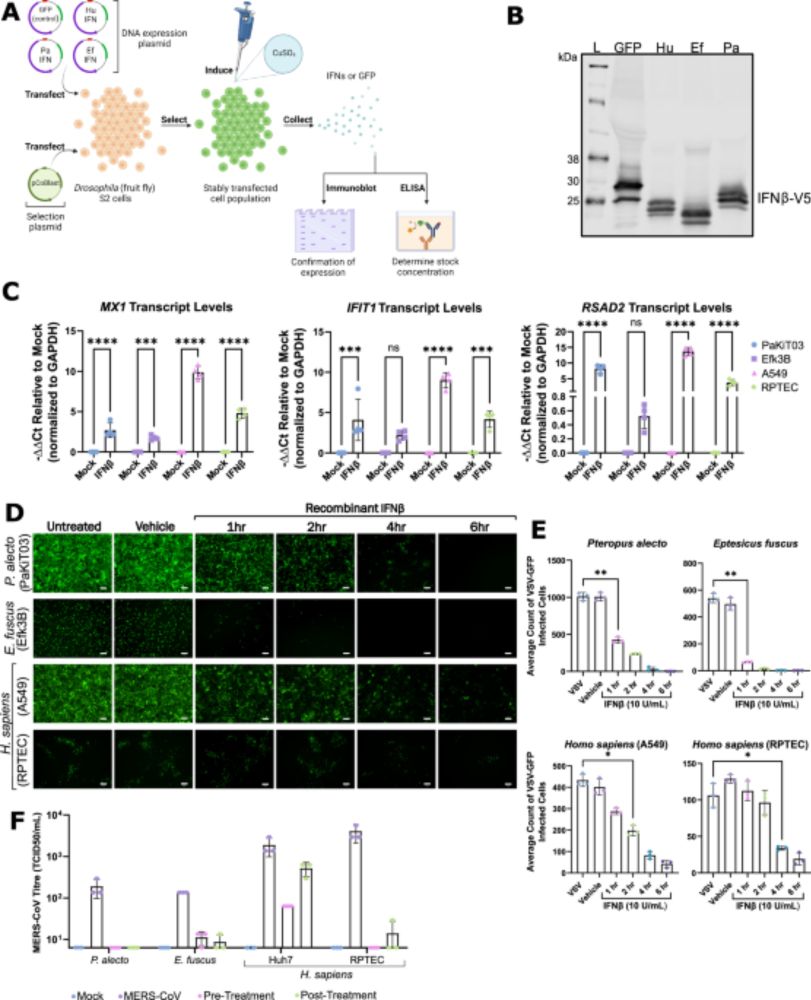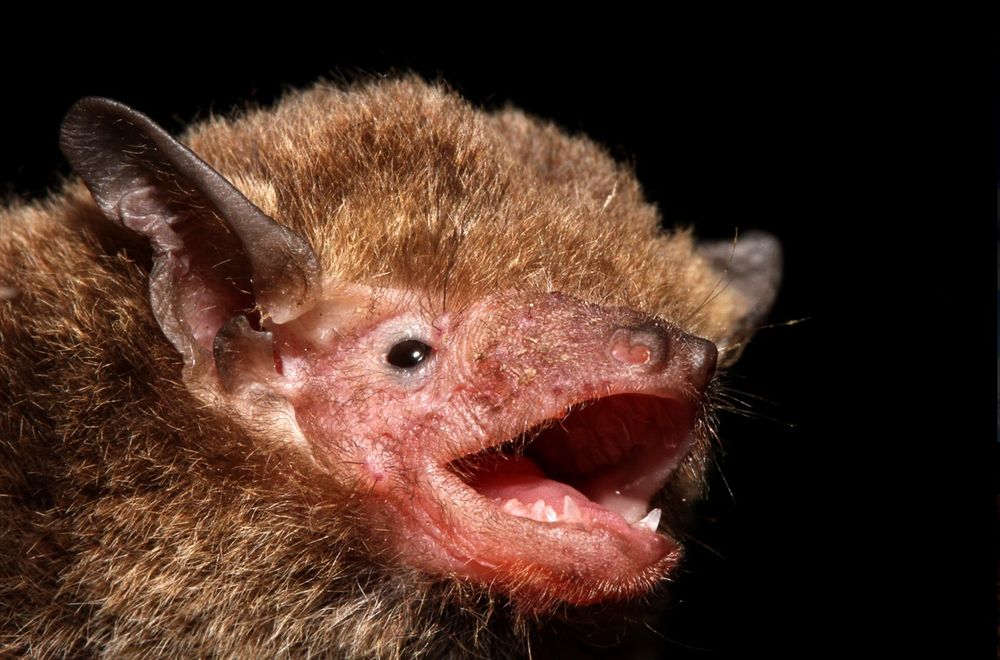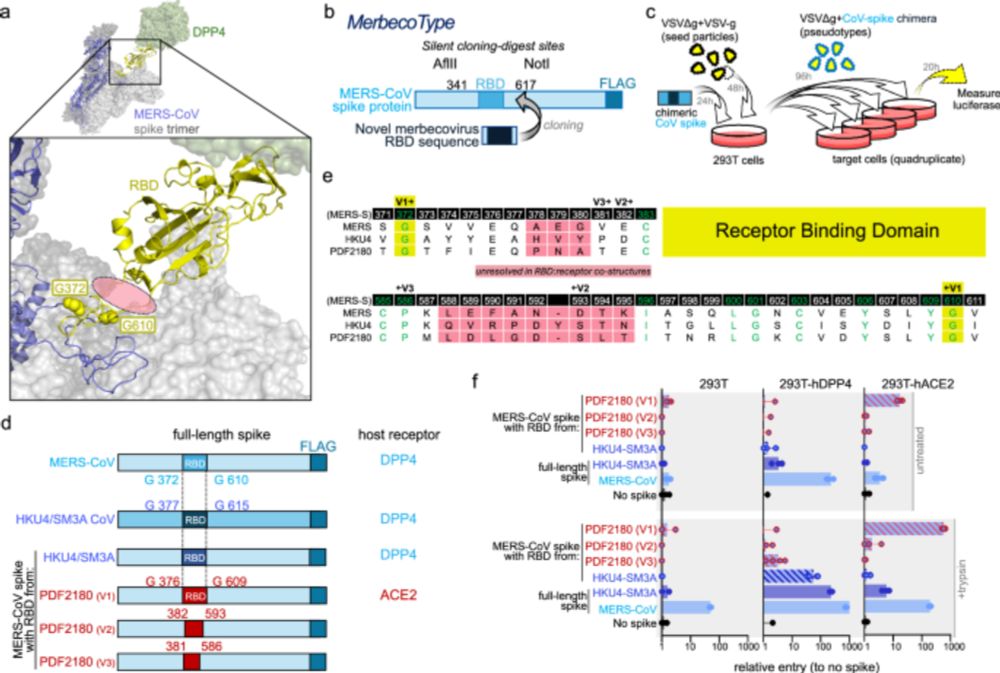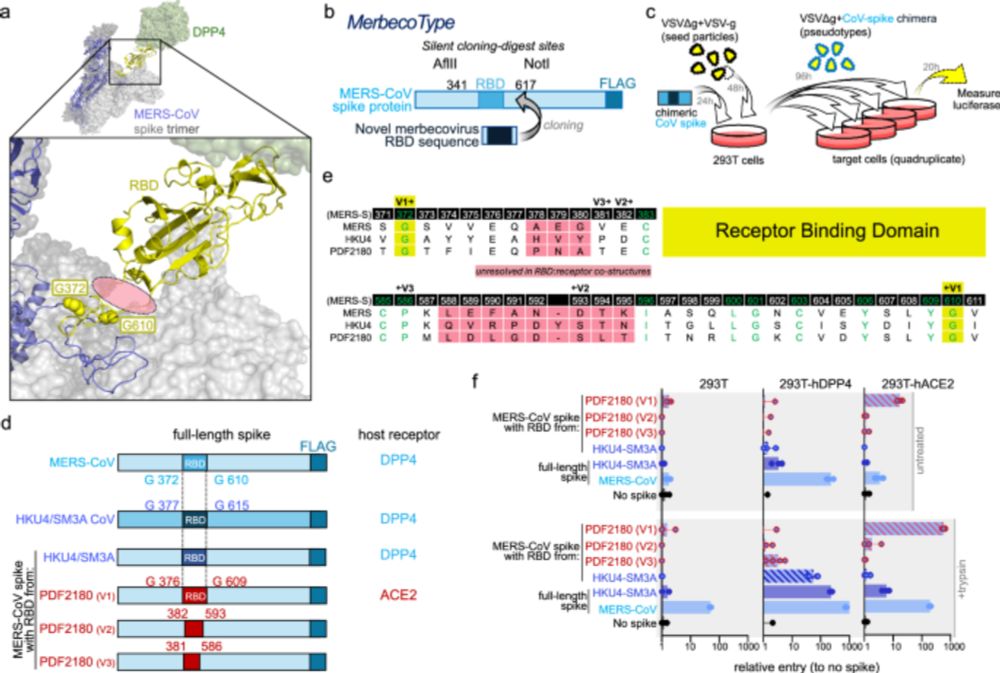I love the kind of papers that I sometimes get from the cryo-EM bot. Hedgehog coronavirus!🦔
16.09.2025 19:01 — 👍 7 🔁 2 💬 0 📌 0

Aminopeptidase N is a receptor for hedgehog merbecoviruses
Merbecoviruses, closely related to the highly pathogenetic Middle East Respiratory Syndrome Coronavirus (MERS-CoV), circulate in hedgehogs throughout Europe and Asia, raising concerns about zoonotic t...
If you haven’t already, you should check out our latest study identifying the host receptor used by merbecoviruses that circulate European and Asian hedgehogs. It’s a surprising finding that unlocks the entire group of viruses for researchers to study further!
14.09.2025 15:41 — 👍 3 🔁 0 💬 1 📌 0
This was a large team effort. Big thank you to our structural collaborator, James Rini at University of Toronto, Craig Wilen at Yale, the Baric lab at UNC, our Italian collaborators for discovering these viruses and sharing cool sequence data, and of course, Vic, the talented postdoc in my lab.(6/6)
04.09.2025 04:48 — 👍 3 🔁 1 💬 0 📌 0
To expand on the RBD clade classifications from our last paper:
CLADE 1 = MERS-CoV, HKU4 = DPP4 users
CLADE 2 = HKU5 complex, HKU25, H.Savii = ACE2 users
CLADE 3 = PDF2180, NeoCoV = ACE2 users
CLADE 4 = ErinCoVs (all of them) = APN users
Such receptor diversity for one subgenus! 🤩
(5/6)
04.09.2025 04:48 — 👍 2 🔁 2 💬 1 📌 0
We also provide not one, but TWO cryo-EM co-structures of ErinCoV RBDs bound to hedgehog APN. Both German and Italian hedgehog coronaviruses interact with hedgehog APN identically. Binding assays show that ErinCoVs have a lower affinity for APN than other CoVs have for their receptors. (4/6)
04.09.2025 04:48 — 👍 2 🔁 1 💬 1 📌 0
Aminopeptidase N- the classic alpha-CoV receptor - facilitates ErinCoV entry. And we don't show this for just one virus, we show it for all of them. Every merbecovirus in hedgehogs across Europe and Asia- from ErinCoV-12-19 to HKU31 - all use APN. This is a first for beta-CoVs! (2/6)
04.09.2025 04:48 — 👍 4 🔁 2 💬 1 📌 0

Aminopeptidase N is a receptor for hedgehog merbecoviruses
Merbecoviruses, closely related to the highly pathogenetic Middle East Respiratory Syndrome Coronavirus (MERS-CoV), circulate in hedgehogs throughout Europe and Asia, raising concerns about zoonotic t...
New preprint! If some merbecoviruses use DPP4 and others use ACE2, what do those hedgehog merbecoviruses use?! As it turns out, neither! In our latest study, we uncover the "missing" receptor for the MERS-related viruses in hedgehogs. [These findings were first shared at ASV this year] (1/6)
04.09.2025 04:48 — 👍 27 🔁 12 💬 1 📌 0
This was a large team effort. Big thank you to our structural collaborator, James Rini at University of Toronto, Craig Wilen at Yale, the Baric lab at UNC, our Italian collaborators for discovering these viruses and sharing cool sequence data, and of course, Vic, the talented postdoc in my lab.(6/6)
04.09.2025 04:48 — 👍 3 🔁 1 💬 0 📌 0
To expand on the RBD clade classifications from our last paper:
CLADE 1 = MERS-CoV, HKU4 = DPP4 users
CLADE 2 = HKU5 complex, HKU25, H.Savii = ACE2 users
CLADE 3 = PDF2180, NeoCoV = ACE2 users
CLADE 4 = ErinCoVs (all of them) = APN users
Such receptor diversity for one subgenus! 🤩
(5/6)
04.09.2025 04:48 — 👍 2 🔁 2 💬 1 📌 0
We also provide not one, but TWO cryo-EM co-structures of ErinCoV RBDs bound to hedgehog APN. Both German and Italian hedgehog coronaviruses interact with hedgehog APN identically. Binding assays show that ErinCoVs have a lower affinity for APN than other CoVs have for their receptors. (4/6)
04.09.2025 04:48 — 👍 2 🔁 1 💬 1 📌 0
We also screened APN orthologues from 30 different species to demonstrate remarkably limited species tropism for ErinCoVs. Of concern though, ErinCoVs seem readily compatible with APN from cats and rats. (3/6)
04.09.2025 04:48 — 👍 1 🔁 0 💬 1 📌 0
Aminopeptidase N- the classic alpha-CoV receptor - facilitates ErinCoV entry. And we don't show this for just one virus, we show it for all of them. Every merbecovirus in hedgehogs across Europe and Asia- from ErinCoV-12-19 to HKU31 - all use APN. This is a first for beta-CoVs! (2/6)
04.09.2025 04:48 — 👍 4 🔁 2 💬 1 📌 0

Aminopeptidase N is a receptor for hedgehog merbecoviruses
Merbecoviruses, closely related to the highly pathogenetic Middle East Respiratory Syndrome Coronavirus (MERS-CoV), circulate in hedgehogs throughout Europe and Asia, raising concerns about zoonotic t...
New preprint! If some merbecoviruses use DPP4 and others use ACE2, what do those hedgehog merbecoviruses use?! As it turns out, neither! In our latest study, we uncover the "missing" receptor for the MERS-related viruses in hedgehogs. [These findings were first shared at ASV this year] (1/6)
04.09.2025 04:48 — 👍 27 🔁 12 💬 1 📌 0
Breakthroughs happen when diverse expertise is woven together. Collaboration can be messy—different vocabularies, different tools—but it’s worth it. We made a video with @MinuteEarth about it. 🎥 @fviromics.bsky.social @payeldas.bsky.social & Drew Kramer #EEID
27.08.2025 20:30 — 👍 7 🔁 5 💬 0 📌 0
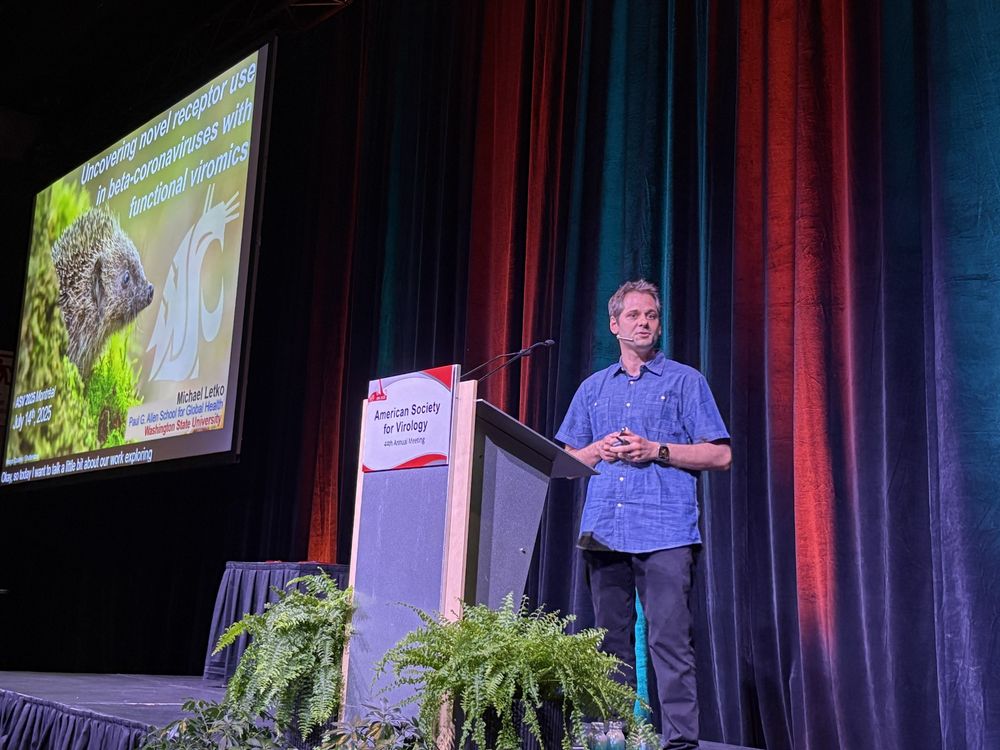
Always great to see Simon Lab Alumni go on to achieve great things! Dr. Michael Letko gave an excellent keynote at #ASV2025 on "Uncovering novel receptor use in beta-coronaviruses with functional viromics" check out his lab's work here: labs.wsu.edu/lofv/ @amersocvirology.bsky.social
17.07.2025 00:01 — 👍 10 🔁 4 💬 0 📌 0
If you aren’t completely tired of us by then, check out my flash talk and poster on Thursday (W55-10). Really looking forward to sharing new work and talking science!
10.07.2025 18:57 — 👍 1 🔁 0 💬 0 📌 0
LoFV will be all over ASV in Montreal this year! I am giving a plenary talk Monday evening and will share an all new study that hasn’t been pre-printed. Also, look out for our talented post-doc, Victoria Jefferson, on Wednesday (P26-15) and skilled collaborator, Nick Catanzaro, on Tuesday (W13-6).
10.07.2025 18:57 — 👍 5 🔁 1 💬 1 📌 0
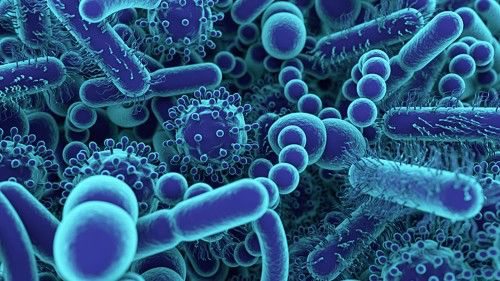
Microbiology and infectious diseases
This page highlights recent articles on all aspects of bacteriology, mycology, parasitology and virology, covering the biology of pathogens, host-pathogen ...
Our study assessing global merbecovirus entry and showing the receptor for HKU5 viruses was featured by the editors on the Nature Communications highlights page. Give it a read if you haven’t already!
www.nature.com/collections/...
12.06.2025 03:44 — 👍 5 🔁 1 💬 0 📌 0
Infectious diseases and virology, Sunnybrook Health Science Centre and Research Institute, University of Toronto. Studying viral zoonoses & One Health; Wild EPI. CIHR-PHAC Applied Public Health Chair.
A keeper of Q. Quarantino (Born to be Alive)
Host-pathogen interactions, structural biology, protein design and more. Assistant Professor at Duke University.
www.wrapplab.org
The VIGILANT project is funded by #HorizonEurope and develops broad spectrum antivirals for pandemic preparedness. Find more information at https://www.dpz.eu/en/vigilant
Virology, Immunology, and Microscopy enthusiast! PhD Candidate in the Gallagher lab at Loyola Chicago 👩🏻🔬🦠🧫🔬
Curiosity may have killed the cat, but I would rather be a dead cat!
Assistant Professor @ulaval.ca; Tier 2 Canada Research Chair in Structural Systems Biology; Focused on virus-host interactions using structural biology
Emeritus Professor at Fred Hutch in Seattle. My lab studied HIV and other viruses. My main account is on Mastodon: @memerman@mstdn.science where I post about virology, hiking, biking and gardening. Here, mostly to follow virologists and other friends.
Virology Lab studying virus-host interactions at the Icahn School of Medicine at Mount Sinai in New York City, NY
Co-Creating Ireland's Public Involvement in Open Research Roadmap
ENGAGED is building a national roadmap to shape public involvement in open research in Ireland. We believe that research can and does play an important role in tackling societal challenges.
Teacher. Learner. Investigating mysteries of SARS-CoV-2 evolution. LongDesertTrain on another platform.
Virologist, Head of Infection Biology Unit, Deutsches Primatenzentrum, @primatenzentrum.bsky.social dpz.eu/en/infection-biology Views are my own
Researchers at the University of Birmingham, Centre for Liver and Gastrointestinal Research, UK
Official BlueSky account for the Lab of Pamela Bjorkman at the California Institute of Technology. Structural Biology 🔬 Immunology🥼Virology 🦠 Vaccine 💉 www.its.caltech.edu/~bjorker
We work on planetary problems. Currently: counting climate change-related deaths; pandemic risk assessment in a changing biosphere; data, science, and vaccine access during public health emergencies. 👉 carlsonlab.bio
Laboratorio de Enfermedades Virales Emergentes. Instituto de Investigaciones Biomédicas, Universidad Nacional Autónoma de México
Yale Journal of Biology and Medicine. PubMed-indexed. Open-access. Peer-reviewed by an extensive network of experts in biology & medicine.
https://medicine.yale.edu/yjbm/
https://linkedin.com/company/42945075/admin/page-posts/published/
Viruses, vaccines, and some big big computers at the University of Chicago | Argonne National Laboratory with @ramanathanlab.bsky.social and Jim Davis. he/him ✞⚽🎾
Assistant Professor | Yale Molecular Biophysics & Biochemistry | structural biology & virology of herpesviruses | didychuklab.org
UMN alum and Professor. Virology. No activity on this account is endorsed by anyone, ever. There are no captains in baseball
Infectious Disease Ecology & Applications (IDEA) Lab @ WSU
Word nerd 📖 | Bird nerd 🪶
Erstwhile hockey player | Dog parent




